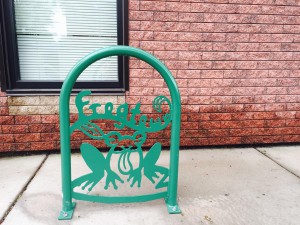We are proud to announce that the Minnesota Environmental Partnership is applying for our Transportation Leadership Certification, from our member organization, Transit for Livable Communities.
What does this mean?
Well, it means that we are rethinking transportation, for our employees, as well as for our members, partners, guests, and others.
First, let’s back up – why is this a big deal?
Transportation is a major contributor to the causes of climate change. In Minnesota transportation accounts for 25% of greenhouse gas emissions in the U.S., second only to the power sector. Over half of that is accounted for by light vehicles and trucks on the road – the ones that you and I drive. Traffic congestion is also a major contributor to poor air quality. This means residents in these areas, which tend to be in the poorest in urban and suburban areas, confront the highest health risks due to poor air quality, such as asthma.
By moving more people with fewer vehicles, we can reduce our greenhouse gas emissions. Solutions like light rail systems (which produce 62% lower greenhouse gas emissions per passenger mile than the average single occupancy vehicle (SOV)), bus transit (which produces 33 lower emissions than the average SOV), and active transportation options like biking and walking (which of course produce no emissions), are necessary to confronting our environmental challenges like air quality and climate change.
What we can do
Because of the reasons above, the Minnesota Environmental Partnership and our member organizations are pushing for systemic change through comprehensive, balanced, statewide funding for transportation that includes transit and bike/walk investments. We can’t afford not to invest in these solutions.
It’s also important for us to make changes on an organizational, and individual, scale.
Through Transit for Livable Communities‘ Transportation Leadership Certificate program, nonprofit organizations like MEP can opt to make critical changes that will encourage individuals to use alternative modes of transportation. This includes things like,
- providing options to reduce transportation costs for employees and communities served;
- improving employee health and productivity;
- supporting transportation options for a diversity of staff, clients, and visitors;
- taking advantage of the Green Line and connecting bus services to support transportation options; and
- fostering a stronger connection within the community.
As part of this program, the Minnesota Environmental Partnership has adopted several changes and practices. Among them:
- We installed bike racks adjacent to our St. Paul office, making it easier for our staff and guests to get here via bicycle, with private bathrooms for changing available.
- We updated our website to provide multi-modal directions on how to get to our office, which is highly accessible via transit and bikeways.
- We prioritize locations that are accessible by transit or options other than driving alone when planning off-site meetings or events.
- We provide an organizational memberships to HOURCAR and car2go for employees to use to get to work-related meetings and events.
- We’ve identified individuals on staff who can be a resource about using different modes — such as walking, biking, transit, and ridesharing.
- And more.
We encourage other nonprofit organizations to consider ways they can encourage all modes of transportation. If you are interested in learning more about the Transportation Leadership Certificate Program, please contact Hilary Reeves, at Transit for Livable Communities.

Working for MEP from the office here in Duluth, I see some additional MEP policies people should know about. For example, our travel reimbursement policy strongly supports use of the shuttle van company that runs between Duluth and St. Paul. Because of the central location of the office, I am able to walk to work year-round but then also take the bus to meetings across the city.